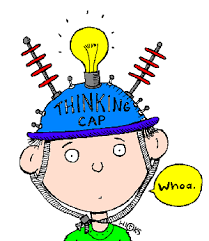
Schools around the country are leveraging the integration of online digital content and offline curriculum to allow for increased student flexibility over path and pace. However implementing digital content and targeted instruction without structured processes for student reflection can make for hollow implementations. Having completed walkthroughs in hundreds of personalized classrooms nationwide, our consulting team found, yet again, that the most successful personalized classrooms have a culture of student ownership that comes from scaffolded, regular, and supported student reflection.
While many teachers implement student reflection in offline learning, we see gaps in applying these same structures to online learning, leading to missed opportunities for empowered learning. Reflection helps students become better engaged in their learning. (See a summary of John Hattie’s book “Making Learning Visible” and Robert Marzano’s research on the high impact of metacognition and student reflection on progress to substantiate the importance of student reflection). Student reflection about their progress, in fact, is as important as digital content selection and implementation. Digital content options can be “bright shiny objects”, due to their ability to distract implementers from critical activities such as determining the key need that they want to solve and iterating their design to meet objectives. All new implementers want to find “the answer” through digital content. But digital content is only part of a more personalized solution. And reflection is a critical component that is often, but should never, be ignored. So today we want to help you implement student reflection - check out our tips below!
5 Tips For Focusing on Student Reflection to Make Online Learning More Powerful
1. Reflect Around Level of Understanding Daily
Students can assess their level of understanding in their journals before and after a digital content activity to prime their brains to think about how much they’ve learned in each activity. This is helps students become more aware and engage in their lesson better. (Marzano’s work calls for a “level of consciousness” in the student in order to learn. Students access the “self system” to determine level of engagement.)
1st grade example below:
In younger grades, progress monitoring might be a simple acknowledgement of completed lessons each day. Here, Rocketship students, are encouraged to complete 3 i-Ready lessons and 5 Dreambox lessons daily. Students reflect at the end of the week around daily progress.

In upper elementary grades, students can track their own progress in a more nuanced fashion. In Lexia, for example, students can look to their student information tab (level, activity, and unit) as well as see how far along in a single activity they are via the progress bar on the bottom of their screen.
Middletown, New York middle schoolers use journals such as this one to track their activity, score, and reflect on their work in preparation for their weekly conference period.
See another example of an more outcomes based weekly tracker giving students more choice as to how they learn material:
*Note: Progress can be measured/assessed in a variety of ways (from early stages of personalization to more advanced stages). Student reflection will be more nuanced the more customized their path.
-
students move at the same pace on the same path (ie. all students do the same activity assigned on the same day/week)
-
students move on their own path but have expectations around pace (example: 2 activities per week on your designated path)
-
students move at their own path and pace determined by their personalized learning plan.
Trackers would look significantly different in each case, however, students should be required to reflect at each stage of implementation.
3. Conference to Promote and Support Student Reflection
Conferencing with students can lead to powerful student reflection and modeling opportunities. In this teacher-led PD, a teacher makes suggestions for how to use and ask questions during conferencing periods to review work on digital content and promote reflection. Asking students to begin taking ownership of these sessions to report out on areas in which they are struggling, talking through a problem/task out loud, and goal-setting is a routine many of teachers find as key to students reflecting thoughtfully and moving towards more student-directed personalized learning. (In John Hattie’s meta-analysis, teacher feedback was among the highest impact teacher activities on student activities.)
4. Implement more in-depth reflections monthly or quarterly
Longer-term reflections provide opportunities for students to see patterns and do a deeper analysis of learning modality preference and growth. Below, a 3rd grader at a Seton Blended Learning Network Catholic School charts his lexile growth every month getting closer to his NWEA goal. He reports his own Lexile and reviews it with his teacher during a conference to reflect. This reflection allows for great conversation during conferencing periods. Why, for example, did Diego have a huge jump in Lexile scores from November to December? Was he doing more activities? Was he more focused? How could he recreate that jump? He has one more month to achieve his NWEA goal. What does he need to do to be on track? Monthly and quarterly reflections are great times to bring in parents to hold student-led conferences in which students reflect on their portfolio of work and showcase areas of pride and areas that need improvement.
*Resource: Great set of reflection questions on Edutopia to pull from to help students understand how to reflect well looking back and goal-setting looking forward.
5. Implement a Community of Practice Around Student Reflection
Consistently, teachers tell us what’s most helpful to improving their practice and implementation is meeting regularly with a team of teachers using digital content and focused on personalization. Classroom visits, rotating ownership of mini-lessons focused on what’s working, and critical friends protocols are helpful processes for keeping meetings solutions-oriented. Especially, when innovative teaching is feeling difficult or isolating, this group is an essential support.
As the year comes to a close, consider more deeply emphasizing student reflection around learning in your classrooms as one of your New Year’s resolutions. Tweet us us examples of what’s working!
@edelements #studentreflection

Want more awesome in your inbox? Read more! Subscribe below




